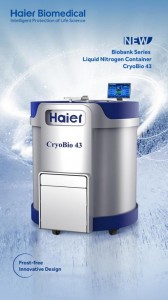Liquid nitrogen tanks, as deep cryogenic biological storage containers, are widely used in medical institutions and experimental settings. The development of liquid nitrogen containers has been a gradual process, shaped by the contributions of experts and scholars over nearly a century, evolving from initial prototypes to the intelligent technologies we are familiar with today.
In 1898, British scientist Duval discovered the principle of vacuum jacket adiabatic, which provided the theoretical support for manufacturing liquid nitrogen containers.
In 1963, American neurosurgeon Dr. Cooper first developed a freezing device using liquid nitrogen as a source of refrigeration. The liquid nitrogen was directed through a vacuum-sealed circuit to the tip of a cold knife, maintaining a temperature of -196°C, enabling successful treatments for conditions such as Parkinson's disease and tumors through the freezing of the thalamus.
By 1967, the world witnessed the first instance of using -196°C liquid nitrogen containers for the deep cryogenic preservation of a human being—James Bedford. This not only symbolized mankind’s remarkable progress in the life sciences but also heralded the official application of deep cryogenic storage using liquid nitrogen containers, highlighting its increasing application significance and value.
Over the past half-century, the liquid nitrogen container has made a splash in the life sciences sector. Today, it utilizes cryopreservation technology to preserve cells in liquid nitrogen at -196℃, inducing temporary dormancy while preserving their essential characteristics. In healthcare, the liquid nitrogen container is used for cryopreservation of organs, skin, blood, cells, bone marrow, and other biological samples, contributing to the development of clinical cryogenic medicine. Additionally, it allows for the extended activity of biopharmaceuticals like vaccines and bacteriophages, facilitating the translation of scientific research results.

Haier Biomedical’s liquid nitrogen container meets the diverse needs of users such as scientific research institutes, electronics, chemicals, pharmaceutical companies, laboratories, hospitals, blood stations, and disease control centers. It is the ideal storage solution for preserving umbilical cord blood, tissue cells, and other biological samples, ensuring stable cell sample activity in a low-temperature environment.

With a commitment to the corporate mission of “making life better,” Haier Biomedical continues to drive innovation through technology and seek radical transformation in pursuit of excellence through the intelligent protection of life science.
1. Innovative frost-free design
Haier biomedical’s liquid nitrogen container features a unique exhaust structure that effectively prevents frost formation on the container’s neck, and an innovative drainage structure to prevent water accumulation on the floors indoors.
2. Automated rehydration system
The container integrates both manual and automatic replenishment, incorporating a hot gas bypass function to effectively reduce temperature fluctuations in the tank during liquid replenishment, thereby improving the safety of stored samples.
3.Real-time monitoring and operational monitoring
The container is equipped with real-time temperature and liquid level monitoring that include an IoT module for remote data transmission and alarms, which improves the safety, accuracy, and convenience of sample management, maximizing the value of stored samples.

As medical technology advances, the in-depth exploration of -196℃ cryogenic technology holds promises and possibilities for human health. Focusing on user needs, Haier Biomedical remains dedicated to innovation, and has introduced a comprehensive one-stop liquid nitrogen container storage solution for all scenarios and volume segments, ensuring that the value of stored samples is maximized and continuously contributing to the field of life sciences.
Post time: Jan-17-2024











